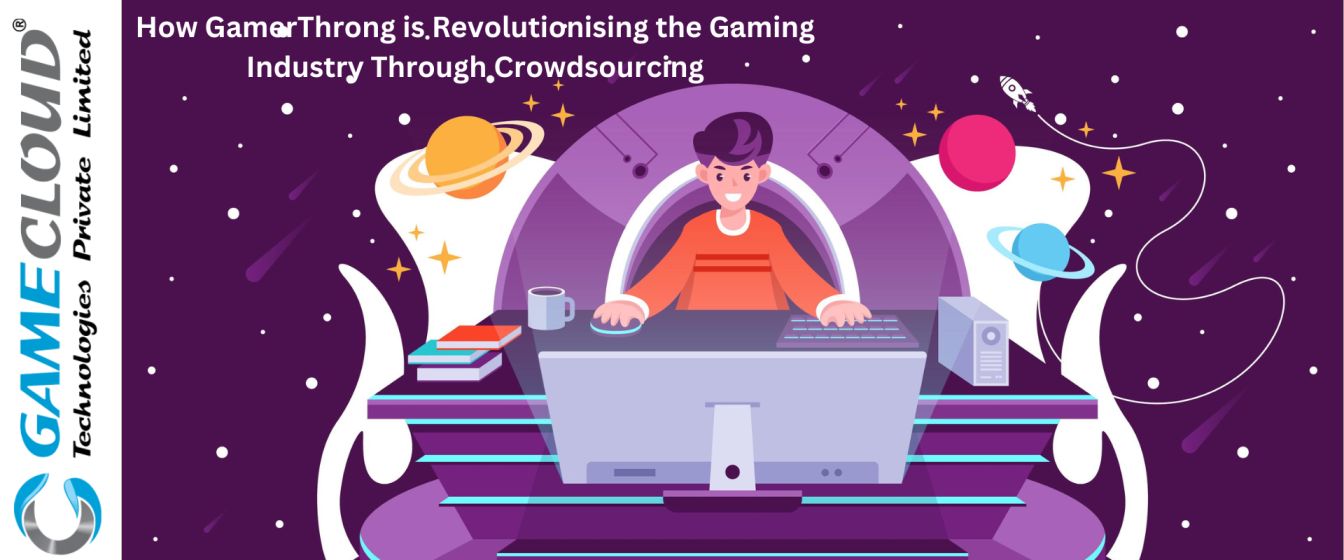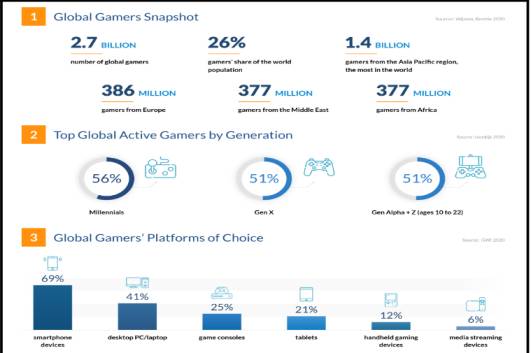
GamerThrong is making significant strides in revolutionising the gaming industry through crowdsourcing. This innovative approach is reshaping how games are developed and funded, bringing about a new era of collaboration and community involvement. One key aspect of GamerThrong’s impact is its utilisation of crowdsourcing for funding and game development. By tapping into the collective intelligence and creativity of gamers, GamerThrong can bring fresh ideas to the forefront and involve the gaming community in the process.
Moreover, this shift towards crowdsourcing in gaming represents a fundamental change in how games are created and experienced. It introduces a new type of gaming experience that merges crowdsourcing, collective intelligence, and gaming, paving the way for more innovative and engaging games. In a gaming industry that has seen significant growth over the years, the introduction of crowdsourcing through platforms like GamerThrong is injecting new life into an industry that has at times struggled with stagnation.
Leroy Jones, for instance, has exemplified this change by launching his community-oriented video game development studio, 3D Dojo Studios, showcasing how individuals are leveraging crowdsourcing to bring their creative visions to life and challenge traditional norms in game development.

How has Crowdsourcing Impacted the Gaming Industry
Crowdsourcing has had a profound impact on the gaming industry, revolutionising how games are developed, funded, and experienced. Here are some key insights from the search results:
- Emergence of Crowdsourcing: Crowdsourcing in gaming has grown significantly with the rise of digital platforms and social media. It involves tapping into the collective intelligence and skills of gamers to solve problems, create content, and test games, transforming traditional game development processes.
- GamerThrong’s Model: GamerThrong exemplifies effective crowdsourcing in gaming by engaging a network of gamers to provide valuable feedback to developers. This inclusive model allows gamers from diverse backgrounds to contribute to game development, leading to refined mechanics, bug fixes, and enhanced user experiences.
- Impact on Game Development: Crowdsourcing leads to more user-centric games as developers can directly gauge player reactions and preferences. Real-time feedback accelerates the development process and gives players a sense of ownership and investment in the final product.
- Data-Driven Insights: Games developed with community input tend to have higher engagement levels and longer shelf lives. Statistics show that crowdsourced games have a 30% higher retention rate than those without community input, highlighting the effectiveness of crowdsourcing in creating games that resonate deeply with players.
- Trends and Future Directions: The future of crowdsourcing in gaming looks promising, with potential expansions into virtual reality and augmented reality. These technologies offer new avenues for player engagement and feedback, further enhancing the crowdsourcing model.
- Challenges: Despite its benefits, crowdsourcing in gaming faces challenges such as ensuring the quality and relevance of feedback, protecting intellectual property, and managing diverse opinions. Balancing player input with developers’ creative vision is crucial to maintaining a game’s integrity.
Some examples of games that have been developed through crowdsourcing include:
- Foldit: An app where players compete and collaborate to find well-folded protein structures. This game allows players to contribute to scientific research by helping determine the structures of proteins, which are fundamental molecules for life to exist.
- DevGame: A platform marketplace where players can upload ideas for new content in video games. Users have free access to the platform and can submit maps, worlds, characters, weapons, storylines, and more. Game developers select specific content from these submissions, compensating the users whose ideas are chosen.
These examples showcase how crowdsourcing has been utilised in the gaming industry to engage players in contributing to scientific research and providing creative content for video games, demonstrating the diverse applications and benefits of crowdsourcing in game development.
How do game developers ensure quality control when crowdsourcing game development?
Game developers ensure quality control when crowdsourcing game development through various strategies and processes. One key approach involves validating proposals to ensure authenticity and completeness, which helps in maintaining quality control and curation throughout the crowdsourcing process.
Furthermore, effective coordination of remote testers is essential for maintaining quality standards in crowdsourced testing. Robust project management is necessary to fulfil all testing obligations and ensure that testers provide comprehensive feedback on identified bugs and defects. Tools like Jira are commonly used for bug tracking and reporting, enabling testers to submit detailed reports with visual evidence to demonstrate the issues found. This feedback loop allows for iterative improvements based on the identified issues, contributing to overall quality control in the game development process.
Ensuring quality control in crowdsourced game development involves validating proposals, coordinating remote testers effectively, utilising bug-tracking tools, and implementing feedback mechanisms to address identified issues. By following these strategies and processes, game developers can maintain high standards of quality throughout the crowdsourcing process, leading to more polished and engaging games that resonate with players.

Quality Control Measures used by Game Developers when Crowdsourcing Game Development
Game developers employ various quality control measures when crowdsourcing game development to ensure the integrity and excellence of the final product. One common approach is the use of ground truth data, where known and formalised questions are injected into tasks to validate responses automatically. This method helps maintain accuracy and consistency in the evaluation process. Additionally, task-specific platforms like 99designs for graphical design tasks are instrumental in addressing intellectual property concerns by assisting both requesters and workers in managing such issues effectively.
Another crucial quality control measure involves submission filtering activities conducted by requesters outside the platform to meet expected levels of quality. This external oversight ensures that submissions align with quality standards and project requirements. Moreover, platforms like DevGame implement validation processes to verify the authenticity and completeness of proposals before they are made available to developers, enhancing overall quality control throughout the crowdsourcing process.
Furthermore, the coordination of remote testers plays a vital role in maintaining quality standards during crowdsourced testing. Effective project management ensures that testers fulfil their obligations and provide comprehensive feedback on identified bugs and defects. Tools like Jira for bug tracking enable testers to submit detailed reports with visual evidence, facilitating efficient communication and issue resolution. By implementing these quality control measures, game developers can uphold high standards of quality, foster collaboration with the gaming community, and deliver polished and engaging games that resonate with players.
Rewards and Gamification in Crowdsourcing
An important aspect of GamerThrong’s crowdsourcing model is the reward of players who are part of the crowdsourcing network. GamerThrong offers real-life goodies such as T-shirts, computer hardware, and gaming accessories, as well as in-game currencies and virtual items to reward the players inside the games they test or perform on. This not only incentivises participation but also fosters a sense of achievement and recognition among the players.
Moreover, GamerThrong incorporates a gamification process wherein the crowd members have an ever-evolving profile. As they progress further in the crowdsourcing program, they achieve level-ups in their profile and receive bigger rewards. This gamification adds an element of competition and progression, further enhancing player engagement and commitment to the platform.
This rewarding and gamification system is a testament to GamerThrong’s commitment to acknowledging the valuable contributions of its player community. It exemplifies how crowdsourcing platforms can create a mutually beneficial ecosystem where players are rewarded for their contributions, leading to more innovative and engaging games. This approach not only enhances individual games but also contributes to the broader evolution of the gaming industry. As the gaming industry continues to evolve, the role of reward and gamification in crowdsourcing will become increasingly integral, shaping the future of gaming in exciting and unpredictable ways.
Conclusion: Future of Crowdsourcing in the Gaming Industry
The future of crowdsourcing in the gaming industry looks promising, with potential expansions into areas like virtual reality and augmented reality. These technologies offer new avenues for player engagement and feedback, further enhancing the crowdsourcing model. Challenges such as ensuring the quality and relevance of feedback, protecting intellectual property, and managing diverse opinions are issues that developers face when crowdsourcing game development. Balancing player input with the creative vision of developers is crucial to maintain the game’s integrity. Platforms like GamerThrong exemplify how crowdsourcing can be a powerful tool for innovation and community building within the gaming industry. By fostering a collaborative environment and valuing player feedback, platforms like GamerThrong are not only enhancing individual games but also contributing to the broader evolution of the gaming industry. Crowdsourcing in gaming empowers players, accelerates innovation, and leads to more engaging and successful games. As the gaming industry continues to evolve, the role of crowdsourcing will become increasingly integral, shaping the future of gaming in exciting and unpredictable ways.
